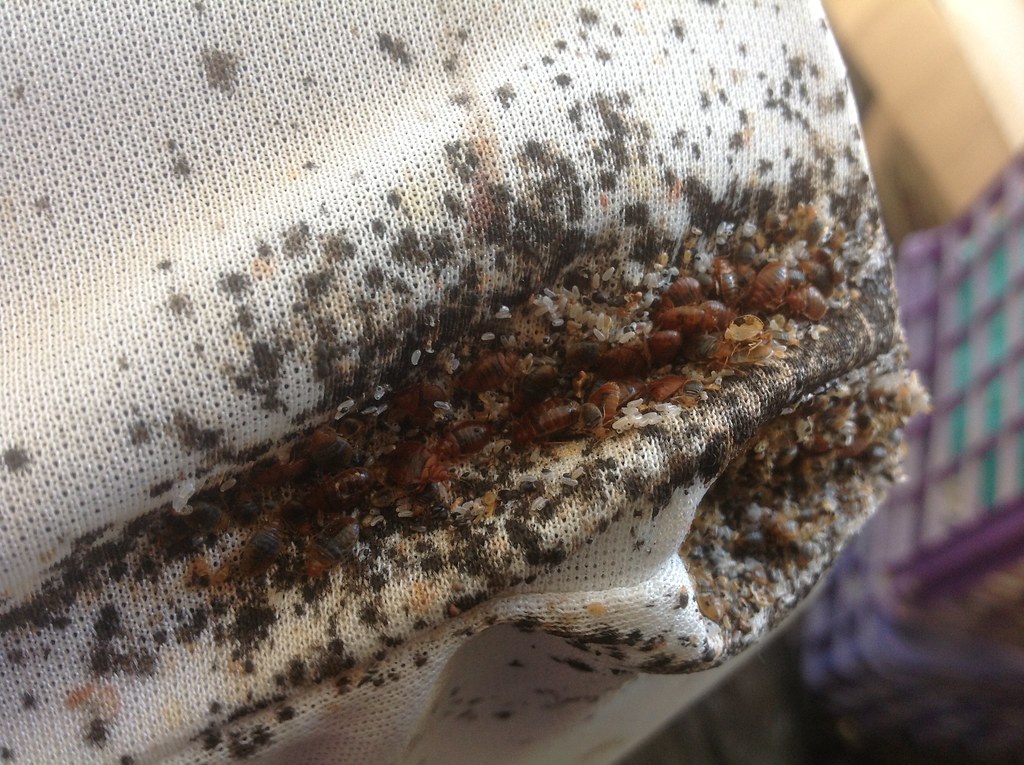Extracted From: https://news.yahoo.com/bedbugs-biggest-impact-may-mental-121746068.html
With a vengeance, bed bugs have returned. Thanks to powerful pesticides like DDT, they’ve been reappearing after a roughly 70-year hiatus in upscale hotels, spas, retail stores, subway trains, movie theaters, and, of course, people’s homes.
Entomologist specializing in public health. I’ve examined these tiny bloodsuckers as part of my work, even allowing bed bugs to feed on my own appendages for scientific purposes. Nobody likes dealing with bed bugs, but there are measures to reduce your likelihood of having to.
Know your bed bug foe.
Humans have been parasitized by the common bed bug, Cimex lectularius, for countless years. In the past, these tiny bloodsuckers were widespread in human habitations all throughout the world, giving the proverb “sleep tight, don’t let the bed bugs bite” actual significance. It wasn’t until the middle of the 1990s that they started to reappear in developing nations after some pesticides were restricted or banned, pest control methods changed, and there was an increase in international travel. They have become a significant urban annoyance in many places throughout the world.
Less than 5 mm long, oval-shaped, and flattened, adult bed bugs are similar in size to small cockroaches or unfed ticks. They have a lengthy proboscis, a tubular mouthpiece they may extend to accept a blood meal, tucked behind their heads in the back. A bed bug may absorb up to six times its body weight in blood in just three to ten minutes.
The newborns are incredibly little and yellowish-white in hue, while the adults are reddish-brown in color. They typically hide in cracks and crevices a few feet away from a bed, only emerging to feed on an unaware host. After mating and laying eggs, they quickly retreat to their hiding spots.
In the mattress and box spring, where they produce obvious black fecal marks, thousands of the tiny bloodthirsty parasites can infest a home. Hundreds of shed skins, thick excrement, and eggs that are several millimeters thick might all be signs of serious infestations.
The biggest effects on health can be psychological
There is scant proof that bed bugs spread human infections, with the probable exception of the germ that causes Chagas disease. Bed bugs have been implicated in the transfer of more than 40 disease species. Rarely, substantial blood loss from extreme infestations might result in anemia.
Their primary medical effects are caused by bothersome biting and the resulting itch and inflammation. Itchy red spots at feeding sites are the most frequent bite reactions, and they often disappear in a week or so. Some people experience complicated allergic reactions or skin reactions, such as hives and blisters.
Then there are the psychological and emotional toll bed bugs take on their victims. Run-ins with these parasites might result in trepidation, anxiety, and sleeplessness. Constant concern and feelings of guilt are major side effects of bed bugs. A Canadian in trouble put it this:
“To be honest, until you go through [an infestation], you have no idea just how horrifying it really is. It is just natural for you to become paranoid; you lose sleep, you end up dreaming and thinking about bed bugs – they just consume every fiber of your being.”
About half of those exposed to bed bugs in one study reported having trouble sleeping and feeling lonely as a result of the infestation.
My coworker and I examined 135 online articles about bed bug infestations. The majority, 81% of the posts, detailed three or more symptoms of post-traumatic stress disorder, including startle reactions, reliving the event through intrusive recollections, nightmares, and hypervigilance. Six entries described thorough and ongoing cleanings of homes and workplaces. Five posts mentioned a persistent avoidance of people, things, and locations that can spread insects or bring back memories of the initial contact. Additionally, five posts described suicide ideas or attempts. Other anecdotal accounts of persons battling bed bugs committing suicide or overdosing on drugs exist.
How to avoid contracting bed bugs
There are bed bugs in some hotel rooms, though not all. Simple measures can aid in preventing infestation for both you and your possessions.
Leave all extras, including clothing, gear, and equipment, in your car. Place your luggage in the bathroom when you first enter your hotel room so you have time to check out the space. Check the mattress and box spring for live bed bugs or dark fecal stains by pulling down the sheets. You should go to the front desk and ask for a different room if you see any bugs or doubtful indications of an infestation. Other nonadjacent rooms may be free of the parasites because bed bugs don’t typically migrate far on their own.
It can be challenging to keep bed bugs out of homes and flats, particularly if you travel frequently. After a trip, unpack luggage outside or in the garage, wash all the clothing in hot water, and if possible, dry on high heat. An excellent aid in the battle against bed bugs is a dryer. Bed bugs can also enter your home on worn furniture or objects bought at garage sales or secondhand shops. Make sure to “dis-insect” or disinfect these kinds of products. No matter how great the deal, it’s wise to never buy old mattresses or beds.
If you are forced to face these bloodsuckers, what can you do? A bed insect infestation discovered in a hotel room needs to be reported right once to management. It’s advisable to avoid attempting to use over-the-counter pesticides on bed bugs if you discover them in your house or in used items. My advice is to get in touch with a reputable pest exterminator who will treat the area with pesticides, and employ sophisticated heating devices to kill the bugs or both.
Try to remain calm. Don’t forget that bed bugs are just insects. They are not spells. You can kill them and get rid of them from a house, I assure you.
This article is republished and paraphrased from The Conversation, a nonprofit news site dedicated to sharing ideas from academic experts. It was written by: Jerome Goddard, at Mississippi State University.






